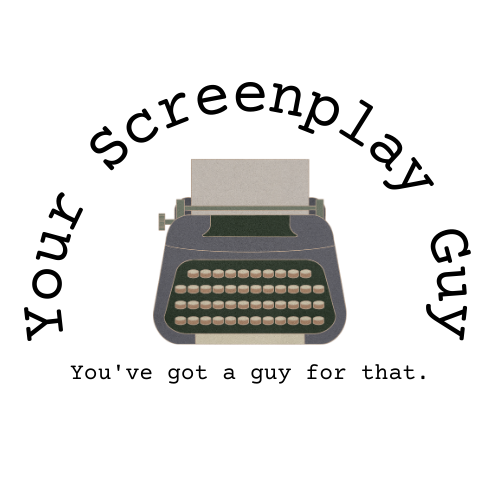
Great screenplays are like roadmaps to cinematic magic. They transport us to different worlds, make us laugh, cry, and think, all in the span of a few hours. One such cinematic gem is "Back to the Future," a timeless classic that not only took us on an unforgettable time-travel adventure but also offers a treasure trove of screenwriting lessons for aspiring writers. So, let's delve into the DeLorean, fire up the flux capacitor, and explore the storytelling wisdom hidden within this iconic script.
1. Strong Character Development
The heart of any great story lies in its characters, and "Back to the Future" is no exception. The screenplay introduces us to the lovable Marty McFly and the eccentric Doc Brown. These characters are far from one-dimensional; they're relatable and memorable. Aspiring screenwriters can learn the importance of crafting well-rounded characters with unique traits and clear motivations.
2. Clear Goals and Obstacles
Every protagonist needs a goal, and Marty's quest to get back to the future is as clear as day. However, goals alone do not make a compelling story. The screenplay brilliantly places obstacles in Marty's path, from the quirks of time travel to the need to mend his parents' relationship. This constant conflict keeps the audience engaged and the plot moving forward.
3. Setup and Payoff
"Back to the Future" is a masterclass in setting up elements early in the story and paying them off later. For example, Marty's skateboard, introduced at the beginning, becomes a vital tool in the climax. This teaches screenwriters the art of foreshadowing and how to create satisfying resolutions.
4. Time Travel Rules
Introducing a concept as complex as time travel can be a narrative minefield, but the screenplay sets clear rules for its functioning. These rules are consistently applied, preventing plot holes and keeping the audience's understanding intact. This lesson in world-building is invaluable.
5. Strong Dialogue
The screenplay is peppered with witty and memorable lines. From Doc Brown's exclamations to Marty's reactions, the dialogue is both entertaining and informative. It shows aspiring writers how to craft engaging dialogue that reveals character traits and advances the plot.
6. Well-Defined Themes
Beneath the time-traveling antics lies a strong foundation of themes like destiny, family, and the consequences of our actions. These themes are woven seamlessly into the story, teaching writers how to incorporate meaningful ideas that resonate with the audience.
7. Structure and Pacing
"Back to the Future" follows a classic three-act structure with well-defined turning points. Screenwriters can learn how to structure their scripts for maximum impact and maintain a pacing that keeps viewers on the edge of their seats.
Related: Conquering Three Act Structure
8. Character Arcs
Marty McFly's journey isn't just across time but also within himself. He undergoes significant character development, evolving from a reluctant teenager to a more confident and responsible young man. This demonstrates how to create compelling character arcs that resonate with the audience.
9. Conflict and Resolution
Every story needs conflict, and "Back to the Future" delivers it in spades. From the initial challenge of getting back to the future to the need to ensure his parents' romance blossoms, conflicts are introduced and resolved with precision, keeping the audience engaged throughout.
10. Visual Storytelling
A picture is worth a thousand words, and this script knows it. The screenplay uses visual storytelling, like the ever-changing family photo, to convey information and advance the plot without relying solely on dialogue. It's a lesson in using the full arsenal of cinematic tools.
11. Iconic Moments
"Back to the Future" is brimming with iconic moments - the first time travel in the DeLorean, the skateboard chase, and the climactic lightning strike. These scenes are etched into the annals of film history, showcasing how to create memorable moments that leave a lasting impact.
12. Humor and Heart
The screenplay strikes a delicate balance between humor and heartfelt moments. From Doc's eccentricity to Marty's fish-out-of-water experiences in the past, it appeals to a broad audience. Aspiring screenwriters can learn the art of infusing their scripts with both humor and emotional depth.
13. Unique Concept
The film's time-travel concept was groundbreaking in its day and remains fresh even now. It reminds writers of the value of exploring unique and inventive ideas in their screenplays, ideas that set their stories apart from the rest.
14. Character Relationships
"Back to the Future" isn't just about Marty; it's about the relationships between characters. The bond between Marty and Doc Brown, in particular, is central to the story. Screenwriters can learn how to develop compelling character dynamics that resonate with viewers.
15. Subtext
Not everything needs to be said outright. The screenplay often conveys information and emotions through subtext, allowing the audience to infer deeper meanings. This is a valuable technique for screenwriters to master, as it adds layers to the storytelling.
"Back to the Future" screenplay is a masterclass in screenwriting. From character development to thematic depth, it provides a rich source of inspiration and guidance for those looking to craft compelling and unforgettable screenplays. So, the next time you watch Marty McFly zip through time, remember that there's a lesson in storytelling excellence hidden behind the flux capacitor.
